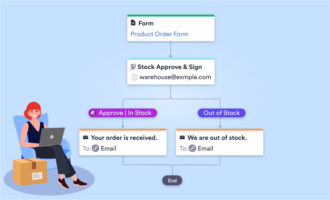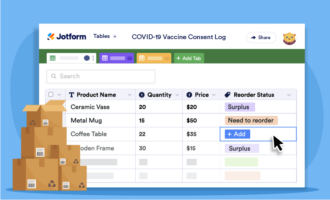Whether you’re in e-commerce, manufacturing, or another type of product-based business, keeping up with inventory can be a significant operational burden. Customer orders are (hopefully) never-ending, and you’re constantly trying to make sure you have enough product on hand to fulfill orders without tying up too much of the budget in overstock.
Two industry experts share several inventory management techniques they use that may work for your business.
5 inventory management techniques
- Plan based on project milestones
- Use ABC classification
- Employ EOQ analysis
- Use statistical methods focused on customer demand to set target inventory levels
- Organize stock systematically
1. Plan based on project milestones
Paul Farmer, vice president of Riverwood Cabins, says his company uses project-based planning to manufacture log cabins. As such, the requirements for inventory change according to the stage of each project. Keeping this in mind helps ensure materials and technicians are available on time and in the right place.
He says they generally approximate project milestones at the start of the project, but the reality is that delays and challenges always occur. “So you can’t rely on milestones alone for inventory management. You have to make allowances for delays and problems. But the technique is still a sound approach for us.”
2. Use ABC classification
ABC classification is a prioritization tool you can use to help optimize inventory levels. For each product, assign a classification according to its priority:
- A: high-value products with a low frequency of sales
- B: moderate value products with a moderate frequency of sales
- C: low-value products with a high frequency of sales
Each category represents how much attention products should receive, with products in category A receiving the most attention and those in category C receiving the least.
Farmer says this technique lets you clearly identify your high-priority products: “You can spend your time and energy on the right materials and products to optimize for maximum efficiency and profit. Essentially, spending time on managing category A products will create the most business benefit.”
Applying this technique properly requires a significant amount of data about each product. “Without knowing aspects such as demand and profit for a given product, ABC classification won’t be as effective. So this may not be the best technique for businesses just starting out or businesses that have recently introduced a new product,” Farmer says.
3. Employ EOQ analysis
Economic order quantity (EOQ) is the recommended number of units you should add to inventory for each order to minimize total inventory costs. EOQ helps businesses overcome stock-out problems and reduce inventory holding costs. It can be calculated using setup costs, demand rate, and holding costs.
Farmer explains that with proper application, EOQ analysis can tell you the right amount of inventory to order per batch, and minimize total inventory costs by reducing setup and holding costs.
“However, this technique understandably requires data on setup costs, demand rate, and holding costs. If any of this data is not accurately calculated, your final calculations can be off by a lot,” he cautions.
Additionally, he notes that you have to put thought into how much weight to give to the results of the analysis. Applying the analysis effectively requires a combination of experience, knowledge of economics, and a bit of trial and error. Check out this article for a more in-depth explanation about calculating EOQ.
4. Use statistical methods focused on customer demand to set target inventory levels
“Setting safety stock levels is something that companies often do incorrectly,” says consultant David Altemir. He explains that the common intuition is to prescribe a minimum inventory level (i.e., safety stock) based on average demand. However, the purpose of holding safety stock is to guard against sudden variations or spikes in demand.
He recommends designing safety stock levels using statistical techniques that characterize demand variability, rather than average demand. “By doing so,” Altemir explains, “inventory reductions of as much as 20 percent to 70 percent are possible while still ensuring fulfillment rates greater than 95 percent.”
5. Organize stock systematically
“It’s always important to ensure items are correctly located in your warehouse management system upon their receipt,” notes Altemir. Defining a set of physical warehouse locations in the system — and ensuring that purchases are accurately logged into the system — will prevent perceived material shortages and needless inventory adjustments simply because your staff can’t physically locate items that are actually present.


















Send Comment: